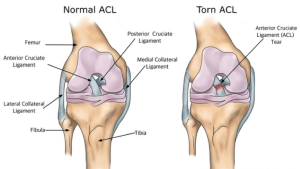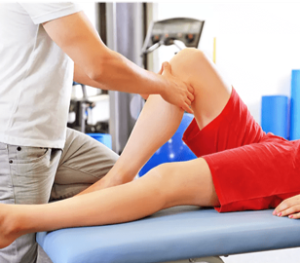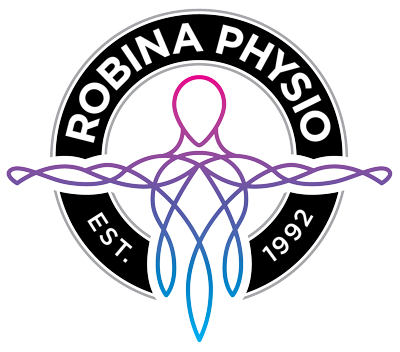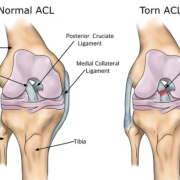ACL Cross Bracing Protocol
ACL Cross Bracing Protocol
By Corey McDonald, Physiotherapist.
Think you need ACL surgery? Think again! In this Robina Physio on the Gold Coast blog we explore a new conservative ACL protocol… The ACL Cross Bracing Protocol.
For decades now it has been indoctrinated into us that the anterior cruciate ligament (ACL) has zero (or very minimal) capacity for healing, and that we must repair it surgically to be able to return to normal function and sport. However, just over 10 years ago the KANON trial showed that this long-standing belief was indeed, not true. It was able to show that the ACL in certain populations has the capacity for healing at the 2 year follow up of the study.
Now in some recent exciting news in the ACL injury space, a new protocol has shown healing at the 3-month follow up in up to 90% of patients!
Enter, the Cross Bracing Protocol.
The Cross Bracing Protocol (CBP) has been pioneered by the daring brilliance of the late, Dr. Merv Cross and his son, Dr. Tom Cross who looked to reinvent the way ACL rehabilitation is performed in the hope that this method may provide a better return to function than the surgical approach. For certain populations without funding or even access to seek out treatment options, the CBP may be a ground-breaking approach to helping thousands around the world.
To get to the point of what the CBP is – it entails keeping the eligible patient in a range of motion brace locked at 90 degrees for 4 weeks, which will gradually increase in range of motion over a 12-week period. The patient must be non weight-bearing on the injured leg for the first 6 weeks, then will be graduated to partial weight-bearing at week 7 and full weight-bearing at week 10. By week 10, the patient will be allowed to sleep without the range of motion brace on.
Now, the question is – could you be the right candidate for this novel approach? Here’s a few things we need to consider:
- Must have injured the ACL within the last 2-3 weeks. Ideally, the best timeframe to undertake the CBP protocol is within 4-7 days of injury.
- MRI to determine the severity and location of the ACL tear, as well as finding any other associated injury to the knee that may need surgical repair.
- History of DVT or pulmonary embolism, and Doppler screening to be taken prior to bracing
- Women using the pill will need to seek advice from their GP/specialist as the anti-coagulant medication may interfere with their medication and may be a risk for DVT.
- You must be functionally independent and able to manage your home/work/study life for a period of strict immobilisation as outlined above.

Through the evolution of this CBP study, these criteria were developed to give the eligible patient the best chance of healing without the need for future surgery or encountering any other complications.
In the CBP trial after only 3 months, over 90% of the subjects had shown signs of healing! A small percentage of the grade 1 cases also showed complete resolution at the 6-month follow-up. These patients also reported better quality of life and function, and a higher rate of return to sport compared with the grades 2-3 after 12 months (92% vs 64%).
Another fun fact from this study showed 97% of the patients with concomitant meniscal injuries were asymptomatic following the CBP! These results are incredibly encouraging, however the data in this cohort is too new to tell whether the 2-year follow up will still hold the same, better or worse outcomes than the 3 month follow up.
The authors of this study had noted that the capacity for the ACL to heal may be pre-determined by its initial tear location and severity seen on MRI. This hypothesis is also backed up by the aforementioned KANON trial, indicating better healing capacity at 2-year follow up in people who had a grade 1 ACL tear seen at the initial MRI scan. The subjects who were graded as a 2 or 3, showed less favourable outcomes at the 2-year follow up.
If the CBP sounds like something that would fit you and your current situation, our roles as your physiotherapist at Robina Physio on the Gold Coast are to:
- help guide your decision for your best and most suitable outcome;
- assist with equipment prescription and correct use of the equipment;
- gradually expose you to exercises that will assist your recovery whilst in the brace
- rehabilitate towards return to sport and/or daily life;
- liaise closely with your GP and orthopaedic specialist
- advise for comfortable positioning, sleeping, bathing and skin protection;
- assist with pain relief
If you have recently been diagnosed with an ACL injury or need further assessment, the expert physiotherapists at Robina Physio on the Gold Coast will be privileged to assist you in your journey to recovery. We stay on the forefront of the most recent evidence and experience-based treatments to give you the greatest result in reducing pain, gaining strength, function and confidence.
If you have recently sustained an ACL Injury or struggling with ongoing Knee Pain and instability visit our expert physiotherapists at Robina Physio on the Gold Coast and getting running pain free again. Don’t hesitate to Contact Us on (07) 5578 7233 or BOOK ONLINE.



